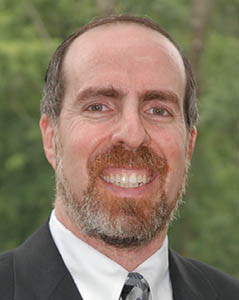
We understand a man’s role in Jewish life—a man is obligated to diligently engage in regular talmud Torah (Torah study) and tefillah b’tzibur (communal tefillah) as well as a wide variety of other mitzvot. A woman’s role in Jewish life, however, is a bit challenging to pinpoint and identify. A beautiful Rashi that appears in our parsha (Bereishit 24:67) sheds much light on this very important issue. Rashi (citing Chazal, Bereishit Rabbah 60:17) notes that when Rivka Imeinu married Yitzchak Avinu and entered the family home, three phenomena returned that were missing since Sara Imeinu’s departure from this world. Rashi states: “Throughout Sara’s life there was a candle lit from Erev Shabbat to the next Erev Shabbat, there was bracha in the dough and a cloud was suspended on the top of the family tent. This terminated when Sara died and returned when Rivka entered the home.”
What is the significance of the candle, dough and cloud? In order to understand, we must look elsewhere in the Torah for where these three items appear together. A direct parallel exists in the context of the Beit Hamikdash. In the Kodesh (also known as the “Heichal”) there are three items: the Menorah, the Shulchan (table), upon which are placed the special breads known as lechem hapanim, and a small Mizbe’ach, upon which the ketoret (incense) is offered. The ketoret is described as creating a cloud (anan haketoret, Vayikra 16:13). Thus, the candle, bread and cloud of Sara and Rivka parallel the Menorah, Shulchan and ketoret of the Beit Hamikdash.
The essence of the Beit Hamikdash (as stated in the Ramban’s introduction to Parshat Terumah) is a makom ha-Shechina, a place for Hashem to “reside”; in other words, a permanent Har Sinai. Accordingly, the Midrash cited by Rashi teaches the extraordinary lesson that Sara and Rivka transformed their tent into a makom ha-Shechina, similar to the Beit Hamikdash.
It is remarkable that in the absence of Sara Imeinu, Avraham Avinu and Yitzchak Avinu were incapable of elevating their homes into a makom ha-Shechina. Rashi/Chazal teach that a man, no matter how righteous he is, cannot create the special place we know as a Jewish home, a place where Hashem becomes part of our family. It takes a Jewish woman to add that intangible element to our homes to create that special glow and warmth of Shabbat, Yom Tov and even every day. Even if men regularly study Torah and attend tefillah b’tzibur, they are simply incapable of transforming a Jewish home into a makom ha-Shechina, an abode for Hashem.
I vividly recall entering my home after my mother experienced a devastating stroke in 1995. Without my mother in the house, it was merely an assemblage of brick and mortar—it ceased being a home.
We men owe a special hakarat hatov to our wives, daughters, mothers, sisters, grandmothers and aunts who elevate our homes into a special place of spirituality. May we all merit, as did Yitzchak and Rivka, to witness the continuation of the tradition from Sara Imeinu and Rivka Imeinu and experience the transformation of our homes into a makom ha-Shechina.
By Rabbi Haim Jachter
Rabbi Haim Jachter is the spiritual leader of Congregation Shaarei Orah, the Sephardic Congregation of Teaneck. He also serves as a rebbe at Torah Academy of Bergen County and as a dayan on the Beth Din of Elizabeth.










